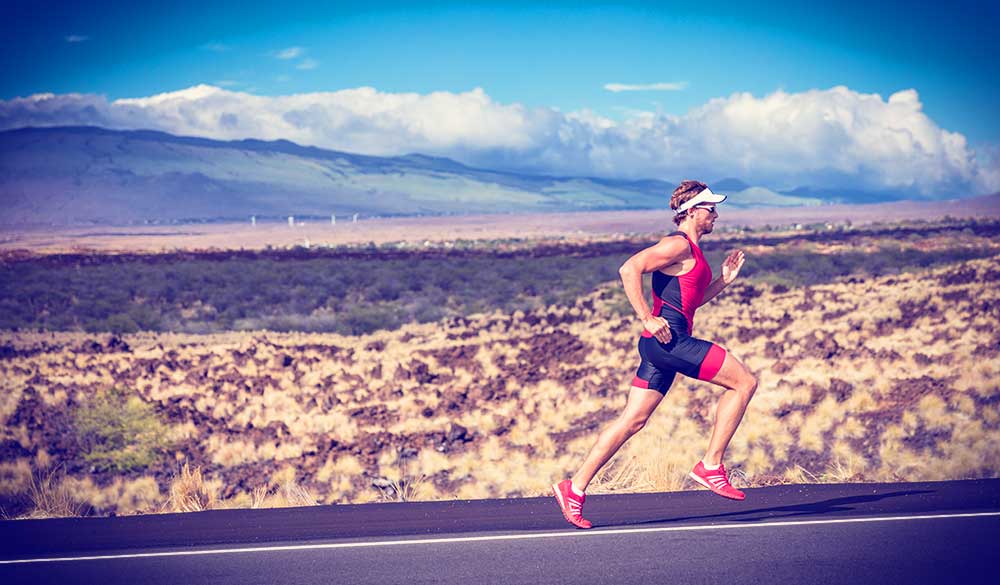In clinical practice, there is an increasing trend of clientele taking up intense cardiovascular and endurance training as part of their personal fitness regime. Marathon runners, triathletes, cyclists and swimmers make up a large proportion of self-challenged individuals taking hold of their own exercise programs. For some, the activity is invigorating and impacts health in a positive way; for others, high oxidative stress and the subsequent effects of redox imbalance see a decline in health.
The diversity of response to what is perceived to be a healthy activity is intriguing and suggestive of systemic and physiological adaptations with varying efficiency.
Mitochondria biogenesis, increased oxidative species and acute inflammatory response are all resultant to the increased energy requirements and central and peripheral adaptations of endurance athletics. These adaptations include improvement of mechanical, metabolic, neuromuscular and contractile muscular functions, electrolyte shifts and decreases in glycogen storage.
Oxidative stress influences intestinal permeability, muscle damage, systemic inflammation and immune response. Endurance exercise also initiates stress-based homeostasis as thermoregulatory adaptation, circulatory changes and shifts to hydration trigger the release of catecholamine’s and glucocorticoids.[1]
Central to the dichotomy of responses to endurance exercise is the gastrointestinal (GIT) microbiome and its metabolic contribution and interplay with mitochondrial efficiency.
The recent systematic review discussed the research-driven understanding of the bidirectional crosstalk between mitochondria and microbes. This communication is believed to be a legacy of the bacterial origin of mitochondria, having evolved from a-proteobacteria.[2]
The GIT microbiota and mitochondrial crosstalk appears to occur primarily via complex endocrine, humoural and immune pathway signalling.
Mitochondria and GIT microbiome characteristics are dynamic, with the quantity and volume of cellular mitochondria and the composition of the microbiome changing in response to cellular oxidative and metabolic demands experienced during endurance exercise.[2]
Microbiota to mitochondria
Gut microbiota, and their byproducts (short-chain fatty acids (SCFAs) and secondary bile acids), regulate redox balance and energy production. SCFA production regulates the production of reactive oxidative species (ROS) and reactive oxidative nitrogen species (RONS) in endurance exercise and are upregulated by endurance associated shifts in GIT microbe composition.[1,2]
In addition to redox regulation, the SCFA N-butyrate is a key regulator of energy production and mitochondrial function. It induces gene expression in skeletal muscles and brown adipose tissue, and improves respiratory capacity and fatty acid beta oxidation (FAO). Secondary bile acid metabolism is believed to directly modify mitochondrial biogenesis, inflammation and intestinal barrier function in different types of cells. In the mitochondria of colonocytes, butyrate undergoes FAO which produces acetyl-CoA that enters the Krebs cycle and results in ATP and CO2.[2]
Mitochondria to microbiota crosstalk
Interestingly, another benefit of mitochondrial health and biogenesis in endurance athletics is the ability of mitochondria to regulate gut functions such as intestinal barrier protection and mucosal immune response.
Clock genes like SIRT1 (regulatory for mitochondrial biogenesis) maintain intestinal barrier function through various mechanisms, such as enhancing crypt proliferation and suppressing villous apoptosis, stimulating intestinal stem cell expansion in the gut, regulating tight junction expression of zonulin ocludin-1, occludin and claudin-1, during hypoxia.[2]
Variation in mitochondrial genes may also affect the gut microbiota composition. For example, polymorphisms in the mitochondrial genome have been associated with specific gut microbiota compositions like Eubacterium and Roseburia, which are butyrate producers. Haplotype variations also influence inflammatory and immune outcomes, with some being associated with decreased odds of severe sepsis, higher oxidative phosphorylation capacity and ROS and RONS production as well as elevated VO2max and aerobic ATP production in response to exercise.[2]
The crosstalk between microbes and mitochondrial is multifactorial and dependant on an array of factors. The review, although not completely based on human research, does provide new insights into the importance of gastrointestinal and microbiome health in a specialised subset of susceptible clientele.
The understanding to-date leads the way into further human studies based around GIT microbiome manipulation and mitochondrial biogenesis induction to increase training and endurance capacity.
REFERENCE
- Mach N, Fuster-Botella D. Endurance exercise and gut microbiota: A review. J Sport Health Sci 2017;6(2):179-197. [Full Text]
- Clark A, Mach N. The crosstalk between the gut microbiota and mitochondria during exercise. Front Physiol 2017;8(319). [Full Text]
DISCLAIMER:
The information provided on FX Medicine is for educational and informational purposes only. The information provided on this site is not, nor is it intended to be, a substitute for professional advice or care. Please seek the advice of a qualified health care professional in the event something you have read here raises questions or concerns regarding your health.


